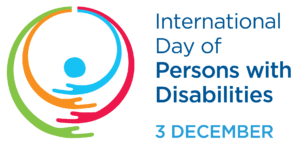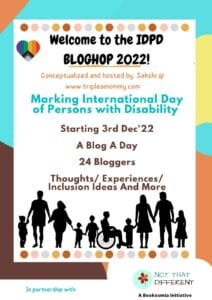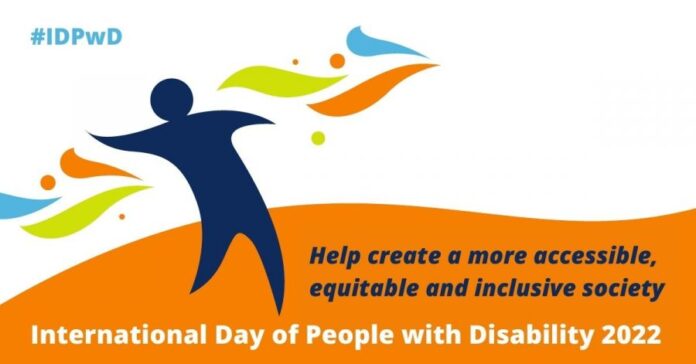A few months ago, I received a mail from the esteemed Women’s Web who was conducting a study to understand how organizations in India are enabling the inclusion of people with disabilities. The survey left me thinking. Being a part of an active working space for more than 11 years now, how much inclusivity have I seen or experienced in the environment around me? Organizations these days advertise the inclusivity of race, gender, and diversity. But what is the real scenario?
Curious, I did some research and was stumped with the revelation. The World Report on Disability 2011 states about 15% of the world’s population lives with some form of disability, of whom 2-4% experience significant difficulties in functioning. It is estimated that there are about 600 million people in the world who have a disability of one form or another. A recent study by WHO states that an estimated 1.3 billion people – or 1 in 6 people worldwide – experience significant disability. Closer home, in India, as per the 2011 Census, out of the total population of India is 1.23 billion, about 2.1 percent (over 21 million people) suffer from one or the other kind of disability. That is a whopping large number – then why are we not seeing them every day in our workforces? What does the law of the land say in this regard?
The employment of people with disability and their right to work is an important topic to ponder. In this blog in honor of the international day of Disabled persons which we celebrate on the 3rd of December, we will try to discuss the law and the practical situation regarding the employment of the disabled person.

Definition of disability:
Before plunging into the issue let us define disability.
In 1976, WHO provided a three-fold definition of impairment, disability, and handicap explaining that “an impairment is any loss or abnormality of a psychological, physiological or anatomical structure or function; a disability is any restriction or lack (resulting from an impairment) of ability to perform an activity in the manner or within the range considered normal for a human being; a handicap is a disadvantage for a given individual, resulting from an impairment or a disability, that prevents the fulfillment of a role that is considered normal (depending on age, sex, social and cultural factors) for that individual.”
A disability is often defined as the malfunctioning, disturbance, or loss in the normal functioning of physical, mental, or psychological processes, or difficulty in the ability to learn or adjust socially, which interferes with a person’s normal growth and development.
Discrimination perhaps starts with the definition. We often term persons with disability as handicapped. The term handicap originated from the medieval act of the beggars extending their caps to receive the handouts. A person can be handicapped in a certain environment without being disabled (Like I cannot swim, thrown in a river, I am unable to move, handicapped but I am not disabled), or have a disability but not be handicapped in many places (there are swimmers with a disability however if someone without a leg is not given access to the lift of a high rise building, they can be handicapped to move, though they are mobile). Thus even the definition includes a derogatory notion.
However, with time there was a change in understanding of disability from an individual pathology to a social construct. The new model of thinking disability is considered an integral part of society.
Law and Disability
Persons with disabilities often encounter several obstacles not only because of their disabilities but also due to sensitivity and attitudinal barriers. Disability laws and acts are instruments through which countries abolish discrimination against persons with disabilities and eliminate barriers to the full enjoyment of their rights and their inclusion in society.
On paper, disability laws and their rights are reserved strongly. The Constitution of India includes in Article 41 of the Directive Principles of State Policy (DPSP) – State shall make effective provisions for securing the right to work, to education, and to public assistance in cases of unemployment, old age, sickness and disablement, within the limits of its economic capacity and development.
Several legislative measures have been initiated for the rehabilitation and empowerment of certain categories of disability such as The Rehabilitation Council of India Act (1992), Persons With Disabilities (Equal Opportunities, Protection of Rights and Full Participation Act) 1995, The National Trust For Welfare of Persons With Autism, Cerebral Palsy, Mental Retardation and Multiple Disabilities Act (1999) and Persons With Disabilities (Equal Opportunities, Protection of Rights and Full Participation Act) 1995.
National Human Rights Commission (NHRC) has taken several initiatives to protect the rights of the disabled. Various legislations have been formulated for the disabled:
- • Right of Persons with Disabilities Act 2016 that replaced Persons With Disabilities (Equal Opportunities, Protection of Rights and Full Participation Act) 1995.
- National Trust For Welfare of Persons With Autism, Cerebral Palsy, Mental Retardation and Multiple Disabilities Act (1999).
- The Rehabilitation Council of India Act (1992)
Several programs have been launched for benefit of the disabled, like :
• Accessible India Campaign: Creation of Accessible Environment for PwDs
• DeenDayal Disabled Rehabilitation Scheme
• Assistance to Disabled Persons for Purchase/fitting of Aids and Appliances (ADIP)
Besides, Employment Exchanges under the National Employment Services as well as Special Employment Exchanges have been entrusted with the responsibility for the placement of persons with disabilities. In 1997 the Government of India incorporated the National Handicapped Finance and Development Corporation (NHFDC) to help entrepreneurs with disabilities through financial assistance.
Challenges and the practical scenario
There is no dearth of initiatives. Still, the progress is not noteworthy. So what are the challenges? Why do people with special needs often face obstacles and lose the basic right to work?
To be honest, the legislation and the practical applications are not going together.
- It is legally mandatory only for public sector undertakings (PSU) to have over 3 percent reservations for persons with disabilities in their workforce. But the mandate is not being followed in the right spirit –
- Most PSUs like BHEL, Hindustan Petroleum Corporation, Bharat Petroleum Corporation, and NTPC, have toed the line but, the list of identified jobs is very restricted. The selection is based on the assumption that the characteristics of impairment are exclusive determinants of an individual’s ability to hold a position at a particular skill level. So in general people with any disability are primarily given back-end jobs requiring only low-level skills.
- It is like ticking a checkbox to fulfill the criteria of 3 percent reservation and not being inclusive of disabled people with other extraordinary skills. Thus leading to discrimination where jobs are listed basis of disability.
- Another significant feature of the quota policy is that it applies only to three disability types – locomotor, visual, and hearing with a 1 percent reservation for each. This itself discriminates against the universe of disabilities offering a narrow perspective in its goal and has failed to provide adequate representation of them in the public sector workforce.
- Further, there is no appropriate information on the status of the implementation of the 3 percent reservation in government jobs provided under the 1995 Act in the annual reports of the Chief Commissioner for Persons with Disabilities. Since there is no necessary audit or follow-up, even government organizations are not managing to meet the 3 percent job reservations for persons with disability.
- Government offers incentives to employers to ensure that at least 5 percent of their workforce is composed of persons with disabilities. But the Government has no laid down operating policy for the same nor do the private companies have any mandate to follow the 5% quota.
- Though Section 47 (ii)) of the PWD Act categorically mentions non-discrimination in the matter of promotion in the area of employment on the ground of disability and the UNCRPD prohibited any discrimination based on disability concerning all matters concerning all forms of employment, in practicality, in most organizations, recruitment rules contain medical standards to be met by a successful candidate thus impeding their recruitment.
- Also, there are contradictory laws like, intellectual disabilities cannot access various employment opportunities in the open market as they are not considered parties competent to enter into a contract as per the Indian Contract Act.
- Multiple barriers make it extremely difficult or even impossible for people with disabilities to function.
- The first and foremost barrier that challenges employment and continuation of employment is the attitudinal barrier. Stereotyping, stigma, prejudice, and discrimination are some of the common challenges faced by a disabled employee on day to day basis.
- Communication barriers: Disabilities that affect hearing, speaking, reading, writing, and or understanding, and who use different ways to communicate often face a communicational barrier, eg. Someone with partial visibility may not be able to read the small fonts used in presentation slides, Videos without caption may impair those with limited auditory sense or workplace with no one to understand oral sign language can handicap those who have an oral disability.
- Physical barrier – Structural obstacles in natural or manmade environments that prevent mobility are physical barriers. Absence of ramps, or lifts to accommodate wheelchairs. Many organizations simply lack the proper amenities for people with disabilities which makes it almost impossible for disabled people to cope with work and other factors.
- Movement barriers – Due to a lack of adequate transportation that interferes with a person’s ability to be independent and to function in society one may not take up many responsibilities. Eg. Some disabilities may restrict the use of public transport, Lack of access to accessible or convenient transportation which may be required to avail to reach the working place.
- Social Barriers – There is considerable skepticism and misconceptions concerning the employment of people with disability. Often employers doubt the capabilities of such persons or give them a role of a much lesser standard than their skills. Others treat them differently and are isolated by their peers due to their ignorance about this part of the world.
Conclusion
For centuries, people with disabilities are treated oppressively. With the advent of new thinking, social media reaches, and campaigning of families and well-wishers have put the focus on the rights of PwDs to secure the maximum possible support so that services related to rehabilitation, education, and employment are all provided through systems. The issue of disability is related to many other social, economic, and political issues. The issues are real and they must start from home. By starting inclusivity around you, in your team in your group, we can aid to take the giant leap to include this potential workforce into the system with respect and grace.
—X—

This post is a part of the “International Day of Disabled Persons” blog hop hosted by Sakshi Varma – Tripleamommy in collaboration with Bookosmia. #IDPD2022Bloghop. Access all posts of this blog hop here



There are many challenges that people with disabilities face when seeking employment. One of the biggest challenges is finding employers who are willing to make accommodations for their needs. Many employers are not familiar with the (RPwD) Act, 2016 and are not aware of the accommodations that they are required to provide. As a result, people with disabilities often have to settle for jobs that do not fully utilize their skills and abilities.Another challenge that people with disabilities face is discrimination. Although the (RPwD) Act, 2016 prohibits discrimination against people with disabilities, it still happens. Employers may discriminate against people with disabilities in hiring, firing, promotion, and other aspects of employment. People with disabilities may also be treated differently than other employees, such as being given less challenging assignments or being passed over for promotions.One way to overcome these challenges is to educate yourself about your rights under the (RPwD) Act, 2016 and to be assertive in asking for the accommodations you need.
The employment scene in India is not great for anyone, disabled or otherwise. There is rampant unemployment and underemployment. On the other hand there is also attrition in certain areas. That’s a huge cost to companies.
In general PWD are much more psychologically resilient and persistent. Hence, once they have the accommodations required, they are much more productive and stable in their jobs as compared to able-bodied people. This is something that needs to be highlighted to companies.
The other very important aspect to consider is the use of assistive technologies. In general, the awareness and usage of assistive technologies is really less even in the metros. Even professionals in this space are not aware of all the gadgets and tech that’s available. When PWD become adept at this, they greatly increase their chances of employment.
Last but not the least, many parents of young children with disabilities are over-protective and prevent their child from becoming independent. When a pwd goes to an interview, their self-confidence is what gets them the job. PWD have to be trained to self-advocate, be aware of their legal rights and be good at their job.
At this point, it’s an uphill battle because of the rampant unemployment. Hence, unless a pwd is able to differentiate himself or herself, and demonstrate why s/he is actually a better overall candidate, it’s going to be difficult to convince the employer; because ultimately it’s a business that has to run. But that also can be made into an advantage!!
[…] Read here for more details. https://darkorange-beaver-494762.hostingersite.com/disability-employment-and-the-challenges-idpd2022bloghop/ […]
There are lot of difficulties, limitations and challenges that physically disabled people are still facing. Agree that lately with approachable social media the reach to rights has increased but inclusion and acceptance still needs more awareness. Thanks for sharing the law and present practical situation in this post Sreeparna.
There is always a huge gap between the law and the real time scenario. There is a need to educating everyone with the type of disabilities and the challenges associated and only then one can be more inclusive and mindful. Thank you for sharing an informative post.
Inclusivity is the way to make life simpler and accessible for the differently abled. Your post talks about law for employment oppurtunities which is much needed for financial independence.
This is really informative and I was not aware of the many laws you have mentioned. Thanks for a week researched article.
It is quite disheartening to witness the dismal state of employment opportunities for PwDs in India. There is surely a long runway for policies to yield desired results with more PwDs being employed in main-stream. Nevertheless there is greater awareness and thinking in right direction in last few year…
On another note, imparting necessary pre-vocational and vocational skills in PwD should improve sustainability of the employment opportunities. My son, Shlok is 13-yr bright chap with down-syndrome and we are focusing on exposing him to various work-environments so he develops better awareness and appropriate pre-vocational skills in the process.
Finally I couldn’t agree more on the need of “inclusive mindset” so as to include this potential workforce into the system with respect and grace.
Thank you so much for writing this blog. I found it extremely informative to read about all the legal developments in one place towards disability and inclusion and as you noted, there is a big difference in having policies on paper than to make actual difference on the ground.The lack of political will to bring about social change is glaring and even after all these years, we need start ups like rampmycity.com to make our cities more friendly towards those with physical disability. The challenges with invisible or neurodiversities are even manifold.
Thank you so much for writing this blog. I found it extremely informative to read about all the legal developments in one place towards disability and inclusion and as you noted, there is a big difference in having policies on paper than to make actual difference on the ground.The lack of political will to bring about social change is glaring and even after all these years, we need start ups like rampmycity.com to make our cities more friendly towards those with physical disability. The challenges with invisible or neurodiversities are even manifold.
I agree with Nidhi- very very informative piece specially on the policy and laws. I am currently getting disability certificate made for my child– great initiative but painful execution. It is a horrid long process of multiple visits and I wonder how people manage to do it.
Inclusion and diversity in the work space clearly needs laws, going together with systemic changes in norms. You’ve rightly pointed to how most jobs address only a certain kind of disabilities. There are some very interesting examples of companies embracing diversity in a real sense, brining together a variety of people with different abilities. Some of them may give us lessons on how to make it work.
Truly, as if being disabled isn’t enough, finding a job is one thing that’s difficult for one who have disability. It’s a good thing nowadays that more and more companies are providing jobs to them and accepting then just as normal people who needs employment and if more, acceptance in the society. One way we could show our support to them in this is by being kind to them when we get to encounter them.
This is such insightful and informative post!! I wasn’t aware of may of the laws. Thanks for putting them all in one space.
Thank you for breaking down with so much clarity the definitions ans implications of impairment, handicap and disability, as well as the laws that exist. The section on barriers is what I really find useful as therein is the understanding needed for employers to offer employment that is inclusive not only in the nature of jobs but also the spaces and the relationships it fosters within the workplace environment.
Very informative post around disability. I liked the way how you have covered the law angle to it as well because most of the disabled people even arent aware about the law concerning PwDs. Keep the good work going.
#ContemplationOfaJoker #Jokerophilia
This is one of the best researched short-form reads on the various rights guaranteed by law for PWDs in India vis-a-vis the actual on-ground challenges of implementing them. Often well-intentioned laws go unimplemented as they lack accompanying social conditions to make them possible.
What a comprehensive post on the disability laws and challenges in its implementation, Sreeparna. Bookmarking this one and sharing it. A must-read for everyone. Thanks for writing this!
Thanks for raising the legal and actual industrial scenario when it comes to employment opportunities for the disabled. My father worked in BHEL and I regularly witnessed and met a few disabled employees and i guess it said a lot for the inclusivity in the 80s and 90s . Am not aware if anything has changed further or not.
Very true! Thank you for raising awareness on the laws and policies regarding PWDs. Anyone and everyone can contribute to society if given the chance, but disabled people aren’t given many opportunities because of their perception as burdens. Really well researched and well-written.